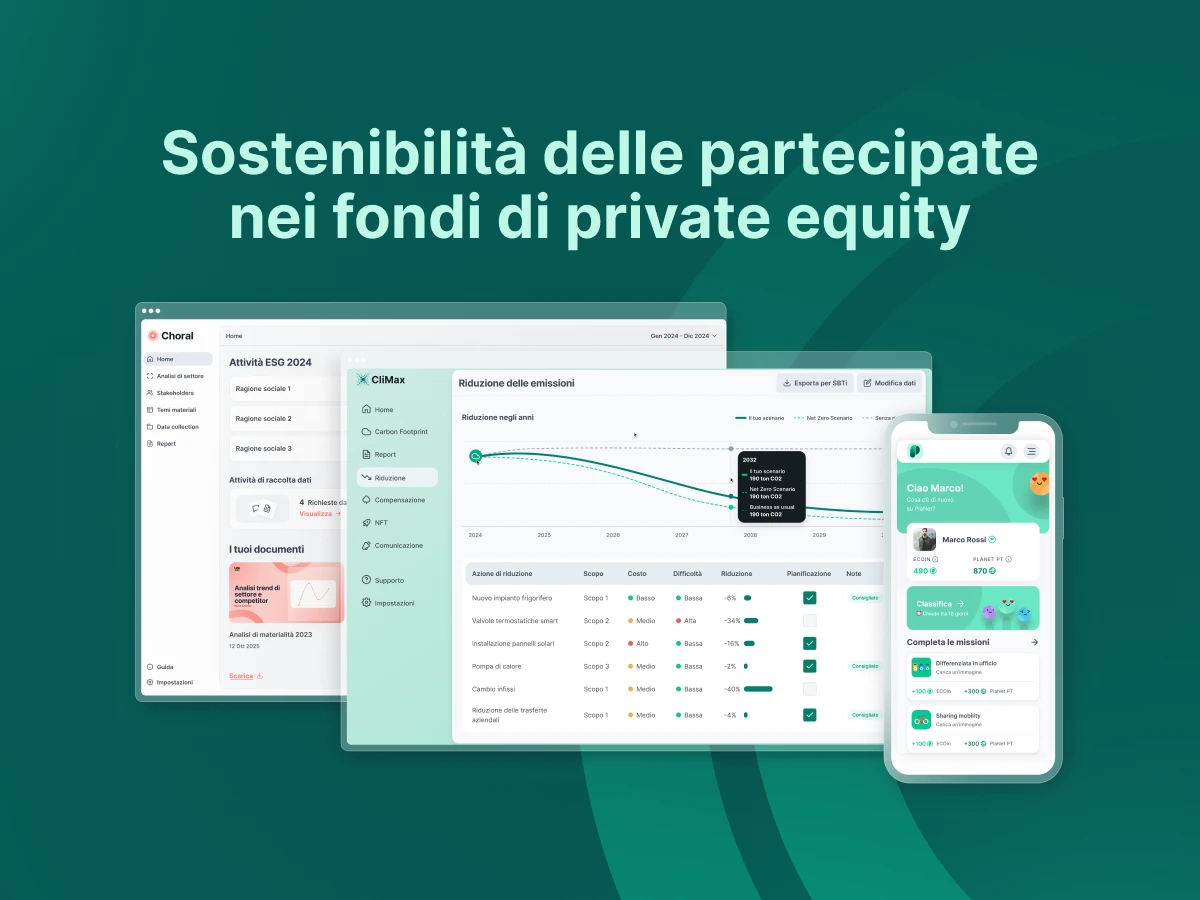Net Zero objective: what it is and what to do to achieve it on time
History and origins of the Net Zero lens
2005
In2005, Myles Allen and Dave Frame, while preparing a presentation on the results of their climate models, came up with the concept of "net zero" on a train bound for Exeter.
Until that time, the climate problem was often defined in terms of the number of greenhouse gas molecules in the atmosphere.
2008
Allenand Frame discovered something revolutionary about global warming, which was later published in the journal Nature in 2008: they discovered that the time it takes for the planet to absorb greenhouse gases and the time it takes for global warming to occur due to higher CO₂ concentrations are similar.
In other words, if CO₂ emissions fall to zero, the two processes balance each other out and the global average temperature remains constant, neither increasing nor decreasing any further.
This means that for every additional ton of CO₂ put into the atmosphere by human activity, there will be an increase in the maximum temperature attainable by the planet.
2015
Followingthe publication of the article in Nature, the term Net Zero has entered scientific reports, such as those of the Intergovernmental Panel on Climate Change(IPCC), and international agreements, such as the2015 Paris Agreement.
The Paris Agreement established the need to achieve this balance by the second half of the century. Since then, the Net Zero concept has become an organizational imperative: nations, regions, cities, and companies are trying to develop robust and verifiable transition strategies.
2023
Today, 91 percent of global GDP has national net zero targets by governments, up from 68 percent in December 2020.
Net Zero targets also differ in timing and how companies plan to achieve their goal. It is important to find universal standards to recognize valuable decarbonization strategies and propose them as best practices for a proper pathway to emissions reduction and offsetting.
The science behind Net Zero: global warming scenarios
The United Nations and the IPCC: why 1.5°C?
Prior to the signing of the Paris Agreement, theUnited Nations Convention on Climate Change(UNFCCC) worked with the intention of containingglobal temperature rise to less than 2°C.
However, scientific research assessed inIPCC reports has shown that a temperature rise to 2°C would pose dangerous risks to many regions of the world, particularly small island states and developing countries.
To further improve scientific understanding of 1.5°C impacts and mitigation pathways, the UNFCCC asked the IPCC to produce what became the 2018 Special Report on 1.5°C Global Warming.
The Report provided the first comprehensive assessment of mitigation pathways and energy system transitions consistent with the 1.5°C warming limit in the Paris Agreement.
Article 4.1 of the Paris Agreement states that global emissions must receive a halt and begin the descent to net zero emissions. Zero emissions must occur by 2050 in order to limit the damage to the planet and allow humanity a sustainable future.
1.5°C VS. 2°C: a concrete example
To understand the difference in the climate consequences that could occur on our planet under the two scenarios of 1.5°C and 2°C temperature rise, we can bring back a concrete example.
If the global temperature rise were limited to 1.5°C, 14% of the world's population would be exposed to extreme heat waves once every five years. But if the temperature were to rise by 2°C, this figure would be three times worse, affecting 37% of the population.
This means that keeping the temperature below 1.5°C would lead to a reduction in risk for 420 million people from frequent extreme heat waves and 65 million from excessive heat waves. In addition, if global temperature rise reached 2°C, some habitats would not survive. Limiting the temperature increase to 1.5°C would mean that the decline of coral reefs, while still high, would be 30 times less than a 2°C increase.
Limiting global warming to 1.5°C requires profound transformations in energy, industrial, urban and land systems on a global scale, with the goal of achieving zero net CO₂ emissions by 2050 and an immediate reduction in greenhouse gas emissions.
Themeasures needed to achieve this goal.
- Near-complete decarbonization of the energy system and industry, with the goal of achieving zero-emission energy supply by mid-century.
- Elimination of CO₂ eq emissions associated with agriculture, forestry and land use.
- Reduction of greenhouse gases beyond CO₂ in all sectors, including Methane (CH4), Nitrogen Monoxide (N20) and Hydrofluorocarbons.
- Removal of CO₂ eq from the atmosphere to neutralize residual emissions and potentially support negative net emissions that reduce CO₂ accumulated in the atmosphere over time.
Interested in learning more about this topic? Want to understand how to structure a decarbonization pathway to achieve theNet Zero goal?
Fill out the form below and download our free white paper!


























